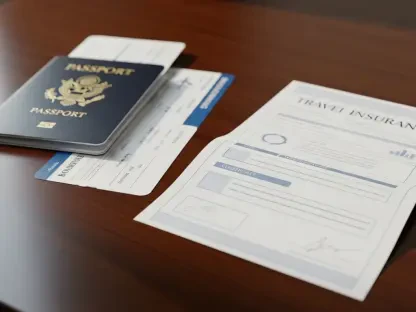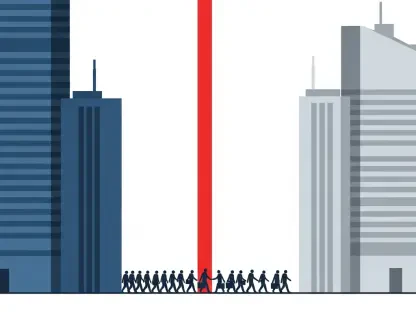In a startling revelation from Queens, New York, a sophisticated scheme involving staged car crashes has come to light, exposing a calculated attempt to defraud insurance companies for substantial payouts. Two Brooklyn men, Jaime Huiracocha, 53, and Victor Murillo, 34, stand accused of orchestrating a series of deliberate collisions targeting unsuspecting drivers. Their alleged actions not only highlight the audacity of such criminal enterprises but also raise serious concerns about public safety on busy roadways. The intricate planning behind these incidents, coupled with the use of accomplices and deceptive tactics, paints a troubling picture of insurance fraud’s evolving nature. As law enforcement and prosecutors delve deeper into this case, the broader implications for innocent motorists and the integrity of insurance systems become increasingly apparent, urging a closer examination of how such schemes are executed and what can be done to prevent them.
Uncovering the Fraudulent Scheme
The accusations against Huiracocha and Murillo paint a chilling portrait of deception on the roads of Queens. Charged with a litany of offenses including insurance fraud, criminal mischief, conspiracy, reckless endangerment, grand larceny, and attempted grand larceny, the duo pleaded not guilty in Queens Criminal Court. If convicted, they face up to 15 years in prison for their alleged crimes. Between August and October of the prior year, they are said to have orchestrated three separate crashes along the Belt Parkway and Nassau Expressway, involving a network of participants lured by promises of cash rewards. These staged accidents were not random but meticulously planned to exploit vulnerabilities in insurance claim processes, targeting innocent drivers who found themselves caught in dangerous setups. The severity of the charges reflects the profound impact of their actions, not just on financial systems but also on the safety of everyday commuters navigating these busy thoroughfares.
Beyond the legal ramifications, the method behind these staged collisions reveals a disturbing level of coordination. Participants reportedly used specific vehicles, such as a silver Honda Civic and a red Kia, employing tactics like covering windows to hide their actions during the crashes. In some instances, drivers were switched after the collisions to confuse authorities and obscure accountability. One particularly brazen incident near the Nassau border in Rosedale involved Murillo allegedly cutting off a driver and reversing into her vehicle, creating a forced accident. Such strategies demonstrate a calculated intent to deceive, exploiting the chaos of a crash to file fraudulent claims. The involvement of additional individuals, like Maikel Martinez, 28, from Dyker Heights, Brooklyn, who faces similar charges for one of the incidents, further underscores the collaborative nature of this operation, highlighting how these schemes often rely on a network of willing accomplices to succeed.
Technology’s Role in Exposing the Deception
A critical turning point in this case came through the use of dashcam footage, which captured the orchestrated collisions in real time and provided undeniable evidence of the fraud. Queens District Attorney Melinda Katz publicly acknowledged the importance of this technology, expressing gratitude for the initial victim’s recording that helped unravel the scheme. The collaboration between the NYPD and the New York State Department of Financial Services was instrumental in piecing together the evidence, showcasing how modern tools can aid in combating sophisticated crimes. These recordings often depicted the defendants’ tactics, such as surrounding a victim’s car to force a collision, leaving little room for doubt about the intentional nature of the crashes. As dashcams become more prevalent among drivers, their role in documenting such incidents offers a powerful deterrent against fraudulent activities on the road.
The financial motivation behind these staged accidents also came into sharp focus with the revelation of fraudulent claims submitted to companies like Allstate Insurance. One injury claim alone exceeded $79,000, illustrating the significant sums at stake and the lengths to which the accused went to secure payouts. This case is not an isolated incident but part of a broader trend of increasing staged crashes, as noted by Katz, posing ongoing challenges for both law enforcement and the insurance industry. The footage not only exposed individual acts of fraud but also highlighted systemic vulnerabilities that criminals exploit. As technology continues to evolve, its integration into investigations offers hope for quicker detection and prosecution, yet it also emphasizes the need for heightened public awareness to prevent unsuspecting drivers from becoming victims of such elaborate scams in the first place.
Broader Implications and Preventive Measures
The ramifications of this insurance fraud scheme extend far beyond the immediate legal consequences for those involved. Staged crashes represent a growing threat to public safety, endangering innocent motorists who are unwittingly drawn into dangerous situations. The financial burden on insurance companies ultimately trickles down to consumers through higher premiums, affecting countless individuals who play by the rules. This case serves as a stark reminder of the need for robust systems to detect and deter such fraudulent activities before they escalate. Law enforcement agencies, in tandem with insurance providers, must continue to refine their strategies, leveraging both technology and public education to combat these schemes. The rise in such incidents signals an urgent call for vigilance among drivers to recognize and report suspicious behavior on the roads.
Reflecting on the events that unfolded, the response from authorities in the aftermath of these staged crashes demonstrated a commitment to justice and accountability. The detailed investigations by the NYPD and fraud bureaus set a precedent for handling similar cases, emphasizing thorough evidence collection and inter-agency cooperation. Moving forward, implementing stricter verification processes for insurance claims and encouraging the widespread adoption of dashcams could serve as effective deterrents. Public awareness campaigns about the risks and signs of staged accidents might empower drivers to protect themselves. As the legal proceedings against Huiracocha, Murillo, and Martinez progress, their outcomes are poised to send a strong message to potential fraudsters, reinforcing that such deceptive practices will not go unpunished and paving the way for safer roadways and a more trustworthy insurance landscape.









